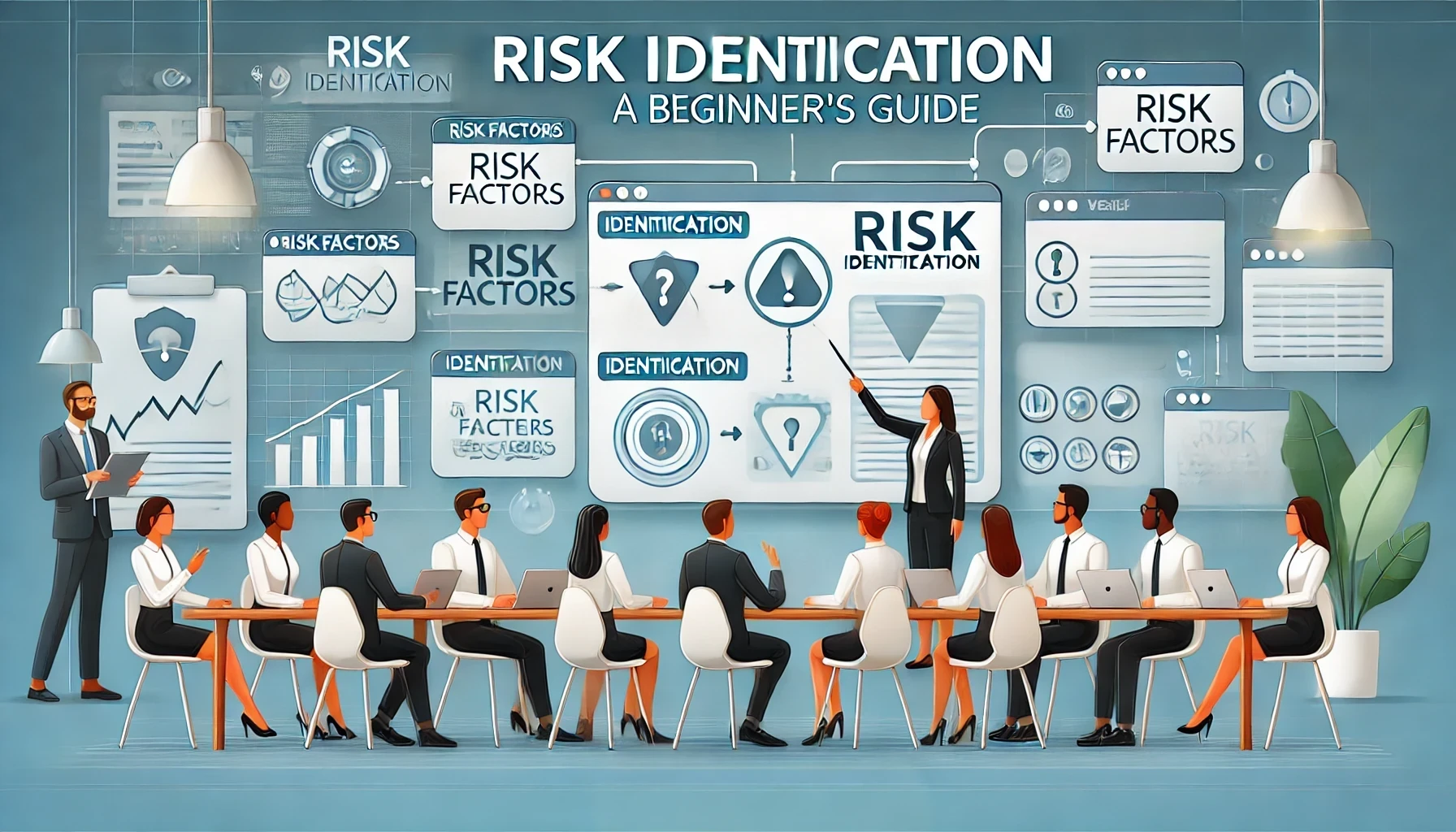Navigating Project Uncertainties
Embarking on a new project is like setting sail on an exciting voyage. You’ve established your destination, assembled a capable team, and prepared your resources. But what about those hidden obstacles, unexpected challenges, or potential setbacks that could derail your journey? That’s where project risk identification comes into play—your essential first step in the broader risk management process.
For newcomers to project management, identifying potential risks can seem daunting. However, with the right approach and techniques, you can develop this crucial skill and significantly increase your project’s chances of success. This guide will equip you with practical tools and methodologies to spot potential hurdles before they become problematic.
Why Project Risk Identification Matters
Risk identification serves as your project’s early warning system. As the initial step in the risk management process, it sets the foundation for project success. By identifying potential risks early in the project lifecycle, you can:
- Substantially increase your chances of project success
- Protect key project objectives from unexpected disruptions
- Make better-informed decisions about project strategy and resource allocation
- Allocate resources more effectively and efficiently
- Build stakeholder confidence through demonstrated preparedness
- Create opportunities to leverage positive risks (opportunities)
The Project Management Institute (PMI) emphasises that effective risk identification is crucial throughout the entire project lifecycle, not just during the initial planning phase. As your project progresses, new risks may emerge while others become less relevant, making continuous risk identification an essential practice.
The Risk Identification Process: A Structured Approach
Risk identification is an ongoing journey, not a one-time exercise. Here’s a step-by-step guide to implementing a robust risk identification process:
1. Review Project Documents
Begin by examining your project plan, scope statement, requirements documentation, and other relevant materials. These documents contain valuable information about project parameters, assumptions, and constraints that could reveal potential areas of uncertainty.
Key documents to review include:
- Project charter and scope statement
- Work breakdown structure (WBS)
- Schedule and budget estimates
- Stakeholder register
- Procurement documents
- Technical specifications
- Project constraints documentation
2. Select Appropriate Techniques
Choose risk identification techniques that best suit your project’s size, complexity, and industry. Different techniques can uncover different types of risks, so consider using multiple methods for comprehensive coverage.
3. Engage Stakeholders and Experts
Involve your project team, key stakeholders, and subject matter experts in the risk identification process. Different perspectives, expertise, and experiences can uncover risks that might otherwise remain hidden. Consider conducting dedicated risk identification workshops or including risk discussions in regular project meetings.
4. Identify Risks Across Project Elements
Systematically examine each project element using your chosen techniques. Consider risks related to:
- Scope and requirements
- Schedule and milestones
- Budget and resources
- Quality and performance
- Technology and infrastructure
- People and organisational factors
- External influences
5. Create Clear Risk Statements
For each identified risk, craft a fully specified risk statement that clearly describes:
- The risk event (what might happen)
- The cause (why it might happen)
- The effect (what the impact would be)
For example: “Due to potential supply chain disruptions (cause), critical project materials may be delayed (event), resulting in schedule overruns and increased costs (effect).”
6. Categorise and Document Risks
Group similar risks to help with analysis and response planning. Document all identified risks in your risk register, including relevant details such as risk category, potential impact, and risk ownership.
7. Review and Update Regularly
Schedule regular reviews of your risk register throughout the project lifecycle. As the project progresses, new risks may emerge, while others may become less relevant or change in priority.
Essential Risk Identification Techniques
Here are several effective techniques to help you spot potential project risks:
Brainstorming
Gather your project team for collaborative, free-flowing idea sessions. Create an environment where team members feel comfortable sharing their concerns without fear of criticism. Document all identified risks for later analysis and prioritisation.
Best practice: Use structured brainstorming with clear guidelines to keep sessions focused and productive.
Risk Checklists
Leverage pre-established lists of common project risks as a starting point. These checklists often draw from industry standards, organisational experience, or lessons from previous similar projects. While checklists provide a solid foundation, remember to consider unique risks specific to your project.
Best practice: Customise standard checklists to reflect your project’s specific characteristics and industry.
SWOT Analysis
Examine your project’s Strengths, Weaknesses, Opportunities, and Threats to identify potential risks across these dimensions. This technique helps balance the focus between negative risks (threats) and positive risks (opportunities).
Best practice: Involve diverse stakeholders in your SWOT analysis to gain comprehensive insights.
Delphi Technique
Gather expert opinions anonymously to avoid groupthink and social influences. This method involves:
- Distributing questionnaires to selected experts
- Anonymously compiling and sharing their responses
- Conducting multiple rounds of feedback and refinement
- Reaching consensus on key risks
Best practice: Select experts with diverse backgrounds and expertise relevant to your project.
Document Review
Analyse project documentation, past project reports, industry studies, and academic papers to identify potential risks. This technique leverages existing knowledge and experience.
Best practice: Look for patterns and common themes across multiple sources.
Assumption Analysis
List all project assumptions and scrutinise them carefully. Untested or invalid assumptions often represent significant sources of risk. For each assumption, consider:
- How likely is this assumption to be true?
- What happens if this assumption proves incorrect?
- How can we verify this assumption?
Best practice: Document assumptions explicitly during project planning and review them regularly.
Cause-and-Effect Diagrams
Also known as fishbone or Ishikawa diagrams, these visual tools help trace potential risks back to their root causes. Start with a potential risk event and work backwards to identify possible contributing factors.
Best practice: Organise causes into categories such as people, process, technology, and environment.
PEST Analysis
Examine Political, Economic, Social, and Technological factors that might affect your project. This technique is particularly valuable for identifying external risks beyond your direct control.
Best practice: Consider both immediate and longer-term influences in each category.
Risk Categories: Creating a Comprehensive Map
Grouping risks into categories provides structure to your risk identification efforts and helps ensure comprehensive coverage. Common risk categories include:
Technical Risks
These involve the technology, tools, systems, or methodologies used in your project. Examples include:
- Software defects or compatibility issues
- Technical complexity exceeding team capabilities
- Integration problems between systems
- Untested or unproven technology
Financial Risks
These relate to budget, funding, costs, and financial management. Examples include:
- Budget overruns or estimation errors
- Funding cuts or cash flow problems
- Currency fluctuations (for international projects)
- Unexpected cost increases for materials or resources
Schedule Risks
These involve timeline, dependencies, and delivery dates. Examples include:
- Unrealistic timelines or project milestones
- Task dependencies that could cause cascading delays
- Resource availability conflicts
- Seasonal or regulatory timing constraints
Operational Risks
These relate to processes, procedures, and daily execution. Examples include:
- Inadequate process documentation
- Inefficient workflows or bottlenecks
- Lack of standardised procedures
- Insufficient operational support
External Risks
These originate from sources outside the project. Examples include:
- Regulatory or legal changes
- Market shifts or competitive pressures
- Environmental events or natural disasters
- Stakeholder or vendor actions
People Risks
These relate to human resources and organisational factors. Examples include:
- Staff turnover or key person dependency
- Skill gaps or insufficient training
- Communication breakdowns
- Resistance to change or low morale
Quality Risks
These involve the standards, requirements, and performance of deliverables. Examples include:
- Ambiguous quality requirements
- Insufficient testing processes
- Compliance issues
- Customer dissatisfaction with deliverables
Scope Risks
These relate to project boundaries, requirements, and expectations. Examples include:
- Scope creep or unclear boundaries
- Incomplete or changing requirements
- Misaligned stakeholder expectations
- Inadequate scope definition
Tailor these categories to suit your specific project needs and industry context.
Creating Your Risk Register: The Essential Documentation Tool
A risk register serves as the central repository for all identified risks, functioning as your project’s risk diary. Here’s how to create an effective risk register:
Essential Components
- Risk ID: A unique identifier for each risk
- Risk Description: A clear, fully specified risk statement (cause-event-effect)
- Risk Category: The classification of the risk
- Likelihood: The probability of the risk occurring (often on a scale of 1-5)
- Impact: The potential effect on project objectives if the risk materialises (often on a scale of 1-5)
- Risk Score: Calculated by multiplying likelihood by impact
- Risk Owner: The person responsible for monitoring and managing the risk
- Response Strategy: Your planned approach to addressing the risk
- Contingency Plan: Your backup plan if the risk occurs
- Status: Current state of the risk (e.g., identified, analysed, being monitored, closed)
Risk Register Template
For consistency and completeness in risk documentation, consider using a template. A basic risk register can be created using spreadsheet software with columns for each component listed above.
Regular Updates
The risk register should be a living document, regularly reviewed and updated throughout the project lifecycle. Schedule risk review sessions at key project milestones or at regular intervals.
The Broader Risk Management Process
Risk identification is just the first step in the broader risk management process. To effectively manage project risks, you should continue with:
Risk Analysis
After identifying risks, analyse each one to understand its potential impact and likelihood. This can be done using:
- Qualitative analysis: Assessing risks based on subjective judgement
- Quantitative analysis: Using numerical data and statistical techniques
Risk Evaluation and Prioritisation
Based on your analysis, prioritise risks according to their severity (risk score). This helps focus attention and resources on the most significant threats and opportunities.
Risk Response Planning
Develop strategies to address each significant risk:
- Avoid: Eliminate the threat by removing its cause
- Transfer: Shift the impact to a third party (e.g., insurance)
- Mitigate: Reduce the probability or impact
- Accept: Acknowledge the risk without taking action (for low-priority risks)
- Exploit, Share, or Enhance: Strategies for positive risks (opportunities)
Risk Monitoring and Control
Implement your response plans and continuously monitor risks throughout the project. Track risk indicators, reassess risk levels, and adjust responses as needed.
Your Risk Identification Checklist
Ready to put your new skills into action? Here’s a practical checklist to kickstart your project risk identification:
- Review your project plan and scope statement thoroughly
- Gather your project team and key stakeholders for risk identification
- Select appropriate risk identification techniques
- Conduct structured risk identification sessions
- Create clear risk statements for each identified risk
- Categorise risks and assess their potential impact
- Document all risks in your risk register
- Assign risk owners for accountability
- Develop your risk management approach
- Schedule regular risk review sessions throughout the project lifecycle
Embracing Uncertainty for Project Success
Remember, identifying risks doesn’t mean your project is problematic—quite the opposite! It demonstrates proactive management and preparedness, significantly increasing your chances of project success. By spotting potential hurdles early, you’re positioning your project to navigate challenges effectively.
Effective risk identification is an essential skill for every project manager. It helps you anticipate challenges, make informed decisions, and steer your project towards successful completion. By implementing a structured approach to risk identification, you’ll build confidence in your ability to handle whatever comes your way during project execution.
Taking the Next Step
Ready to transform your approach to project risk management? Project Success Hub offers comprehensive project management training programmes designed to enhance your risk management capabilities and overall project management skills. Our expert-led courses provide practical tools, templates, and techniques to identify and manage risks effectively in any project environment.
Contact us today to learn more about our training offerings and take your project management skills to the next level.






0 Comments